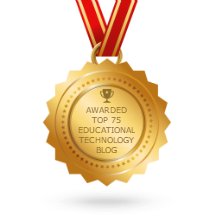Ray Rose is an online learning and accessibility evangelist. He works with educational institutions to improve educational opportunities for all. His experience with online learning goes back more than two decades when he directed one of the country’s first online teacher professional development projects and was part of the team that created the first virtual high school in the US. His blog can be found at http://rmrose.blogspot.com and presentation slides at http://slideshare.net/raymondrose.
I have been waiting for OCR to release it’s NPRM on Section 504 – which was supposed to be out in August. So I wasn’t paying particular attention when the DoJ released it’s NPRM (notice of proposed rulemaking) for the ADA. Most folks think of ADA as being about physical barriers, but ADA also applies to websites. And for DoJ a website is broadly defined to include most anything delivered online.
and within is the link to the actual NPRM guidance
There are concerns with the NPRM. Definitely worth a read. Is this article raising some issues.
New DOJ Web Accessibility Regulation is a Disaster – Converge Accessibility
Someone at your institution should be aware of this NPRM. Ideally there’s been some discussion and your institution is adding its feeling to the public comments DoJ is looking for. But you’ve only got until OCTOBER 3.
“Written comments must be postmarked, and electronic comments must be submitted, on or before October 3, 2023.”
In this NPRM DoJ proposed that all websites (remember that’s under the broad definition of website) must meet the WCAG 2.1 AA standard. While that may have been the current standard when DoJ was writing their NPRM, since then the standard has advanced to WCAG 2.2 AA. And folks are working on WCAG 3 now. Since it’s been 33 years since ADA was passed, it might take another 30 years for another update. Many folks are recommending the language say WCAG 2.2 AA or the current version of WCAG.
There’s a lot in the 200+ pages including issues DoJ wants specific feedback on. But the entire NPRM is open for comment. There’s some expectation the final rule will be published sometime in 2024. The NPRM says institutions will have 2 or 3 years (depending on institution size) to become fully compliant with the rules
One of my favorite areas is 5 days for an academic institution to get a course fully accessible when a student with a known disability enrolls in a course after the normal enrollment time – if the student enrolled in the normal process (before the course begins) – the course is expected to be fully accessible at the course start (WCAG 2.1 AA).
All online course designers who work to retrofit accessibility into existing courses will tell you that unless the course was designed with accessibility in mind 5 days is not enough time. (What I don’t know is how this piece relates to the requirement that all institutions covered by Title II of the ADA have 2 or 3 years from the issue of the final regulations for all online websites to be fully accessible.)
What that means, in my understanding, is online courses need to be made fully accessible. Most academic institutions don’t have the staff to make all courses fully accessible – the course instructors must take that on now. But at least in higher ed there are often staff that know how to do that, to provide assistance to faculty. I don’t know of many K-12 online programs that have the resources.
There’s an interesting K-12 issue in the NPRM; a parent with disabilities needs full access to online information. I suspect most K-12 programs have no idea if they have parents with a disability.
For higher ed there may be someone with accessibility responsibilities that knows about the NPRM. In K-12 institutions, I have doubts there’s been someone paying attention. Please point out the NPRM to the relevant folks and get comments to DoJ by the end of the month (or Oct 3)
Ray Rose is an online learning and accessibility evangelist. He works with educational institutions to improve educational opportunities for all. As is the pattern here at Virtual School Meanderings, there will be no additional entries posted today.
 As I mentioned in the
As I mentioned in the 







 12 Unique Blogs Are Written By Professors
12 Unique Blogs Are Written By Professors